Bread of the Dead: Recipe + History
When the scent of orange blossom floods her kitchen, Chef Elizabeth Pérez Camarena knows the Day of the Dead—or “Día de Muertos”—is near. The citrus-infused essence, also known as “azahar” in Spanish, is said to bring back sweet memories of loved ones passed on and is a signature ingredient of the classic “pan de muerto,” or bread of the dead.
Jump to Recipe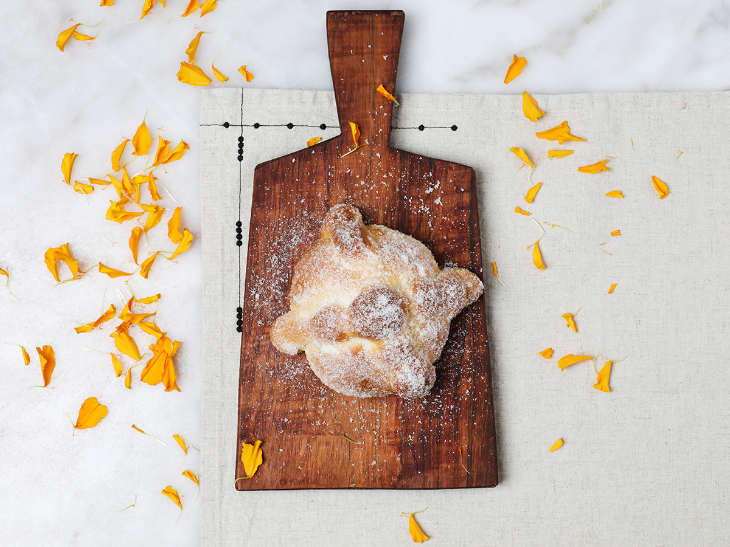
“Pan de muerto brings to mind celebration, traditions, altars, culture, and how it’s a part of our identity as Mexicans,” said Chef Camarena, owner of the Casa Marietta bakery, located in the state of Guanajuato, Mexico. “The orange blossom essence gives pan de muerto a subtle, aromatic taste. And its soft, spongy texture goes perfectly with a cup of hot chocolate.”
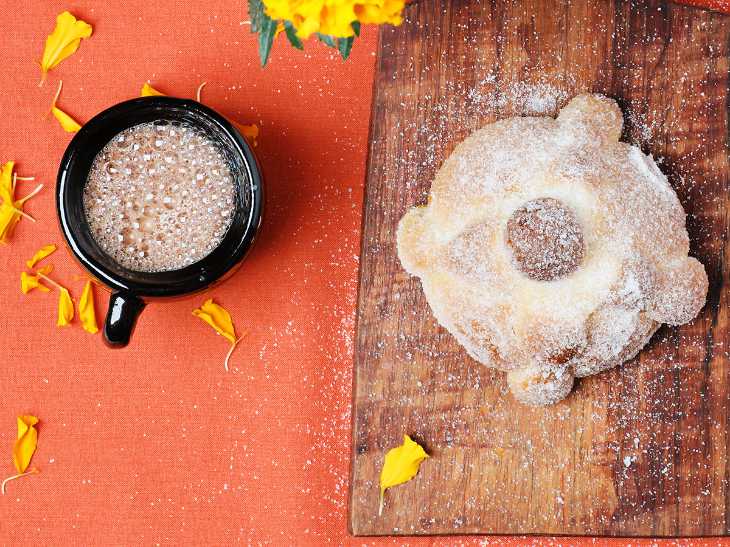
Pan de muerto plays a central role in the country’s Day of the Dead celebration. On November 1 and 2, the Mexican people welcome back the souls of deceased loved ones.
The celebration spans two days—the first for children, and the second for adults. People build altars, or “ofrendas,” adorned with colorful tissue paper cutouts, prayer candles, Mexican marigolds, and sugar skulls. They place photos of the departed on the altar, as well as their favorite food and drink, including mole, chocolate, tamales, guayabas and oranges to nourish them on their journey.
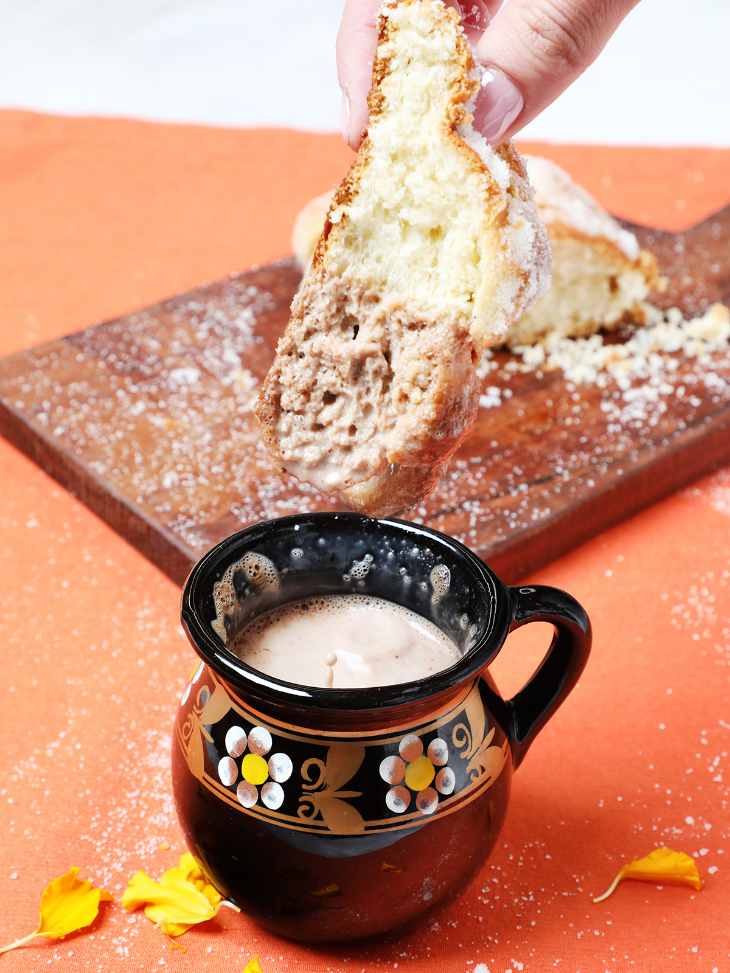
Among the offerings, you’ll typically see bread of the dead, sometimes gathered in a basket much like a bouquet of flowers, says Chef Camarena.
It’s a sweet treat enjoyed by a majority of people in Mexico. A recent survey shows that 94 percent of Mexicans living in Mexico eat the commemorative bread, which is only sold in late October and the first couple of days in November.
According to a 2018 estimate from Canainpa, the national association of the bread industry in Mexico, people in the country eat about 30 million pieces of pan de muerto between October 30 and November 2.

History of Pan de Muerto
Although the stories vary, pan de muerto traces its roots to the time of the Spanish conquistadors in the early 1500’s. Some accounts state it originated in Mesoamerica, when the Aztecs made a type of bread with amaranth, honey, and human blood as an offering to the gods.
It was considered a sacred food, eaten by the entire community. In another explanation, the Aztecs are said to have sacrificed a young woman, placing her heart in a clay pot, and mixing it with amaranth. The priest heading the ritual would then eat it as an offering to thank the gods for a good harvest.
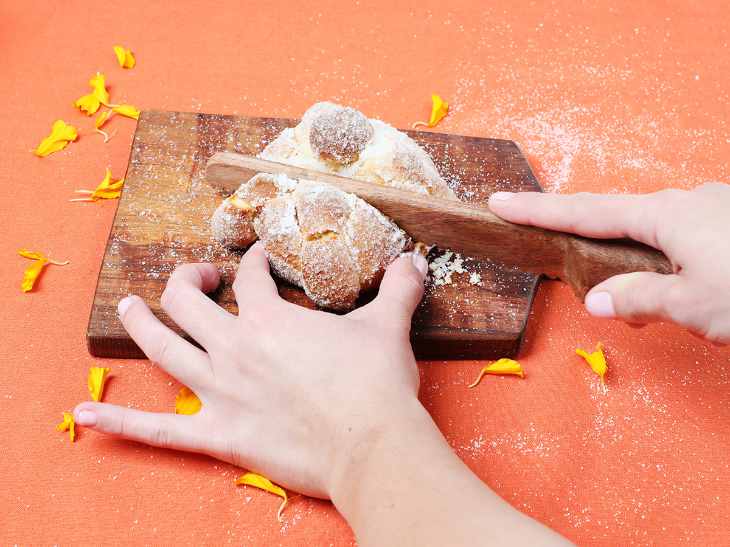
The Spanish Catholic priests, finding the practice of human sacrifice barbaric, did away with these rituals and instead baked wheat bread to represent the hearts of the young women who were to be sacrificed, and covered it with red sugar, representing their blood.
Types of Day of the Dead Bread
Today, there are between 750 and more than 1,200 different kinds of pan de muerto throughout the country, depending on the source. Each region of Mexico has their own version that incorporates special ingredients and shapes like human figures, angels, sheep, hearts, liras (stringed instruments), and hojaldras—the classic round pan de muerto dusted with white sugar.
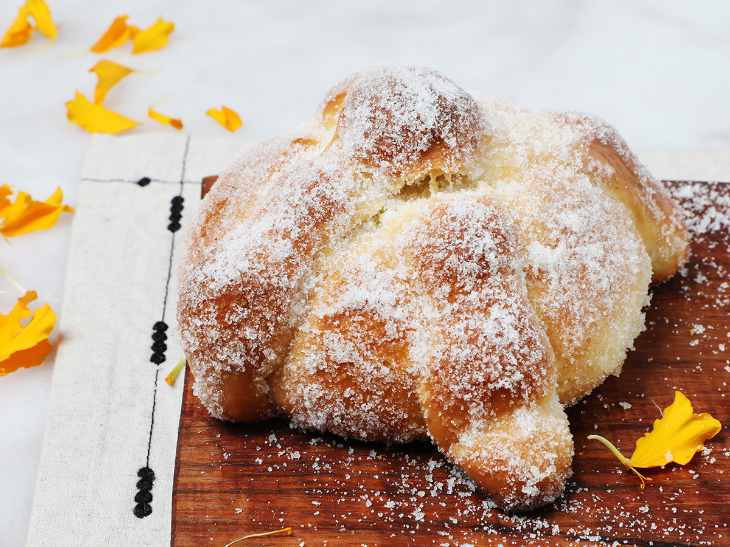
For example, in the states of Mexico, Aguascalientes, Chihuahua, Jalisco and others, hojaldras are the most prominent. But, in regions with higher indigenous populations, the bread is more elaborate and takes on unique characteristics.
In the state of Oaxaca, some bakers make large figures with anise, egg yolk and vanilla in the form of the human body. The head of the figure is made with flour and water, and hand-painted in colorful detail. In the state of Guanajuato, bakers make bread in the shape of animals, flavored with cinnamon, as well as in the form of humans, called “almas.” In the city of Acámbaro, the adult forms are covered with a white glaze, and a dot of pink or red sugar, while the children’s forms are all white.
For the children who have died, bakers make smaller “toy” versions of bread in the shape of fish, horses, donkeys, chickens, rabbits, baskets, and dolls for the ofrenda.
What Bread of the Dead Represents
Each type of pan de muerto is filled with symbolism. For the classic hojaldra, its round shape symbolizes the circle of life and death. The ball on top represents the skull of the deceased. And the pieces that lay across the bread in the shape of a cross signify their bones and tears.

The portions of the cross—or compass—are believed to aim at four cardinal points, each ruled by an Aztec god: Quetzalcóatl (god of light and wind), Xipe Tótec (god of death and rebirth), Tláloc (god of rain and storms) and Tezcatlipoca (god of darkness and sorcery).
Sesame seeds sprinkled on some breads, like those made in Hidalgo, Oaxaca and Mexico City, represent the tears of souls who’ve not yet found rest. While in some regions, people still dust their bread with red sugar, as they were said to do in pre-hispanic times.
Chef Eli Perez Shows You How to Make Pan de Muerto
Our recipe for Pan de Muerto comes from Pastry Chef Eli Perez, owner of Casa Marietta Repostería in Moroleón, Guanajuato.
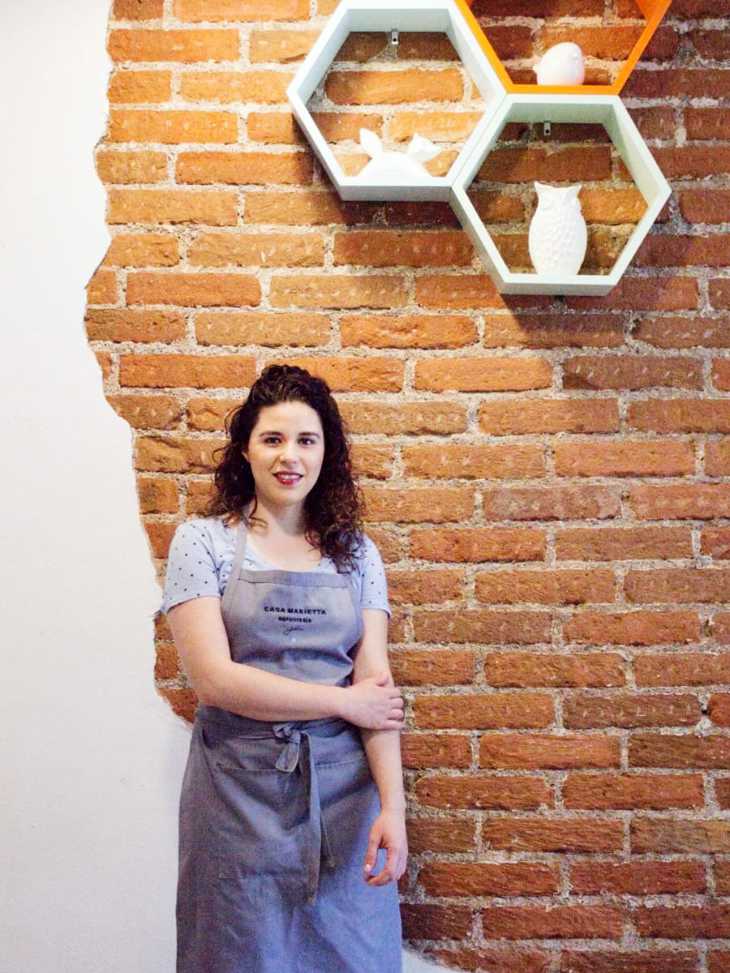
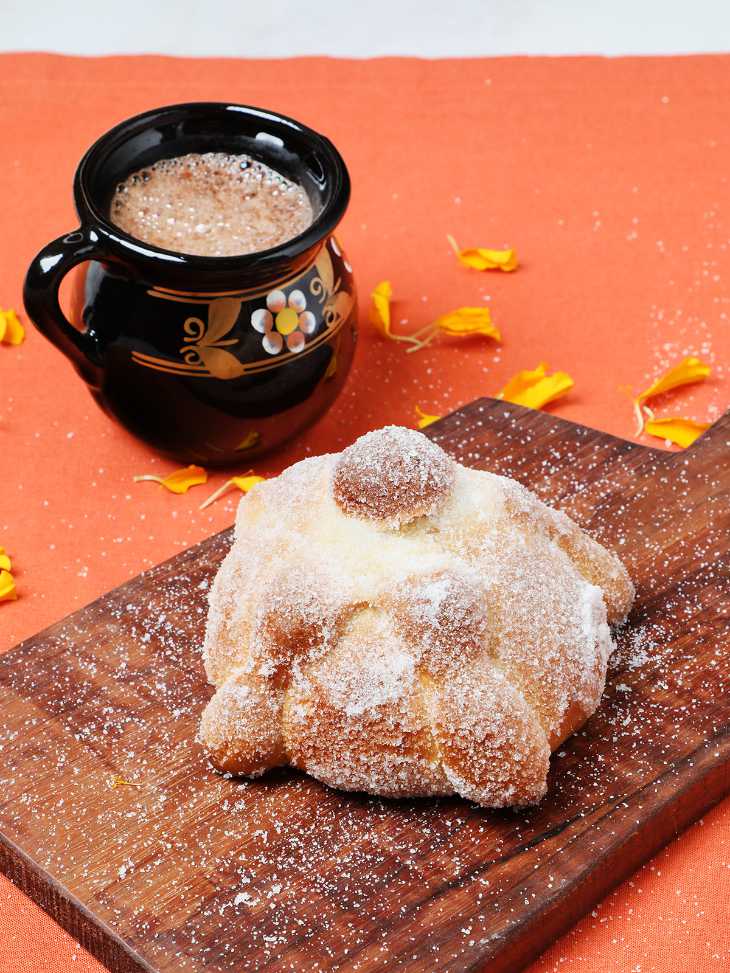
Before You Start
Gather all of the following:
Ingredients:
- 18 ozs. flour
- 5 ½ ozs. sugar
- 3 ¼ ozs. butter to make the dough
- 2 ozs. butter to coat the loaves
- 2 eggs
- 3 to 4 ozs. milk
- 2 oranges (to grate the peel)
- ⅓ oz. orange blossom water (agua de azahar)
- ½ oz. dry yeast
- ½ tsp. salt
Step #1 – Activating the Yeast Starter
First we’ll activate the yeast. Start by gently warming the milk. If the milk is too hot, it will kill the yeast.
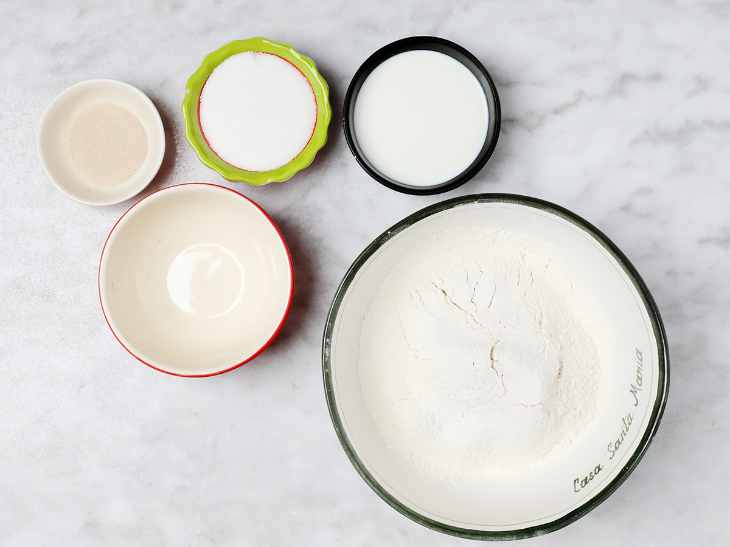
In a small bowl, add 4 tablespoons of flour, 2 tablespoons of sugar and the dry yeast.
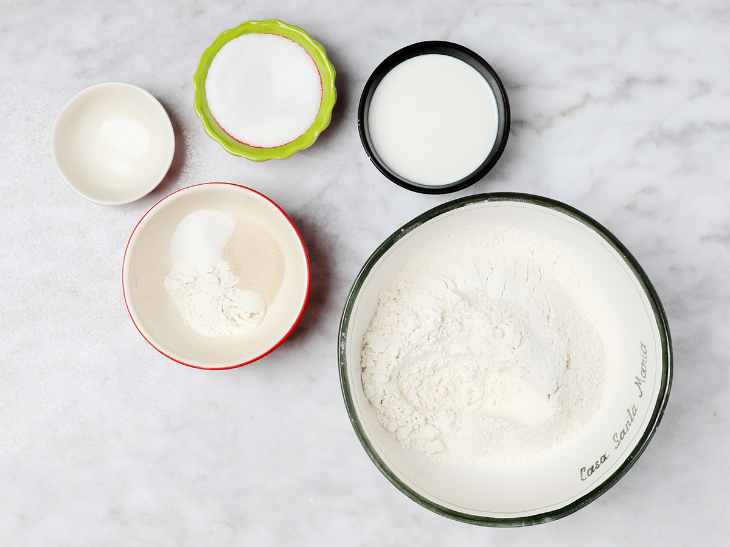
Add 1 to 2 ounces of warm milk. This is just enough to make a thin, homogeneous paste.

Stir until the milk is fully incorporated. Let the starter ferment for 10 to 15 minutes. The warmer the room temperature, the faster it ferments.
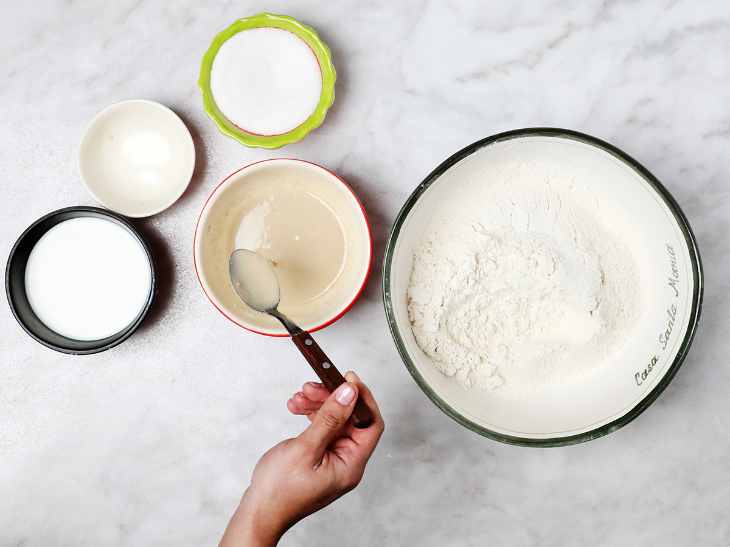
Step #2 – Mixing the Dough
First, grate the orange peel. Pour the flour onto your work surface and make an indentation in the middle. In the indentation, add the butter, half the sugar and the grated orange peel. Sprinkle the salt around the outside ring of flour.
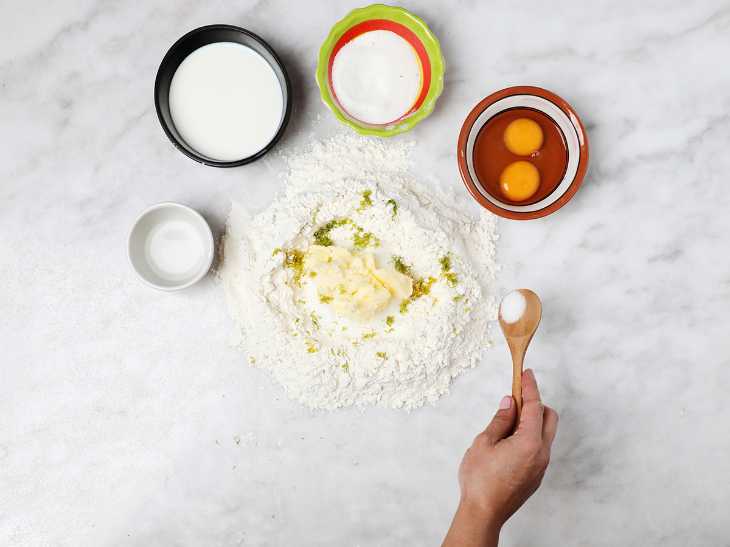
Using your hands, mix the ingredients from the inside out.
Then add the eggs, continuing to mix with your hands.
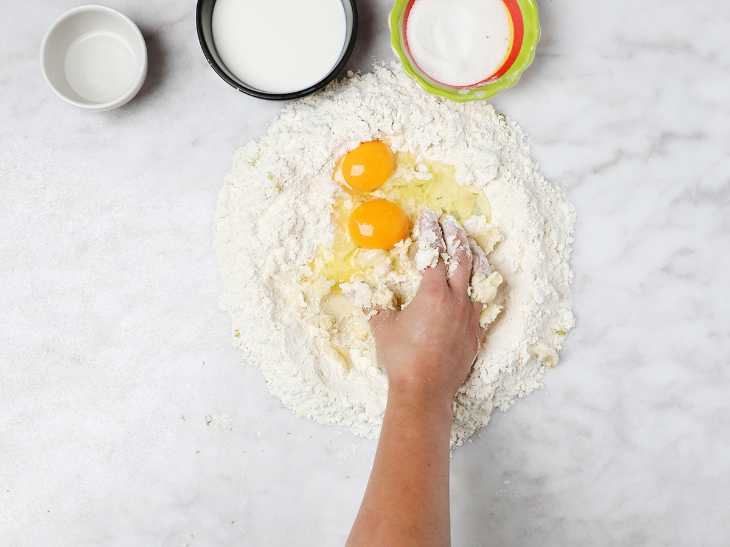
Firmly mix the eggs into the flour.

Add the orange blossom water (agua de azahar).
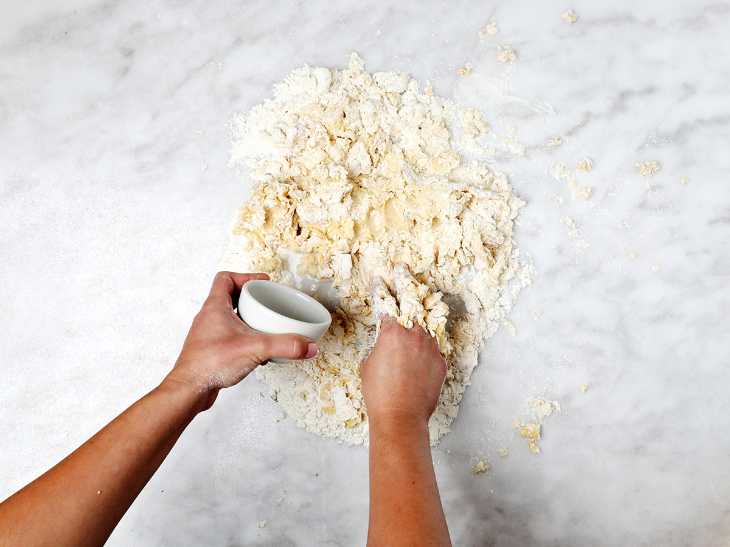
And a splash of milk if needed.

Form a rough ball with the dough.
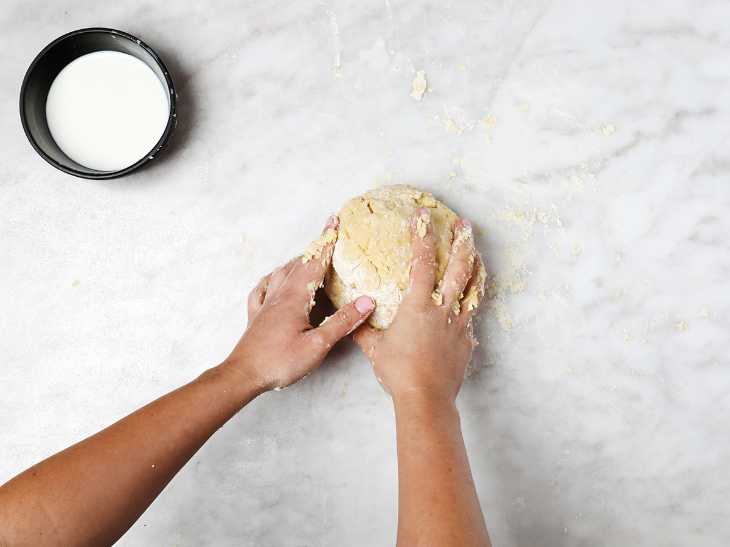
Push the dough down and make an indentation in the center.
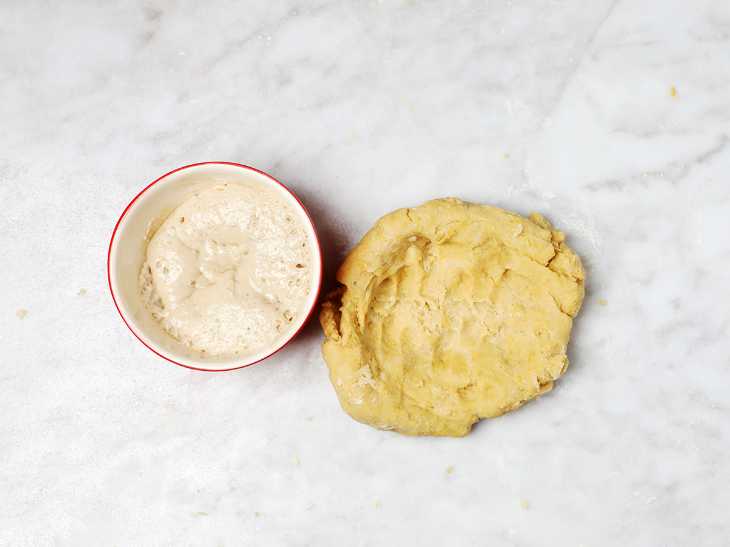
Add the fermented yeast to the center of the dough.

Use your hands to mix the yeast into the dough.
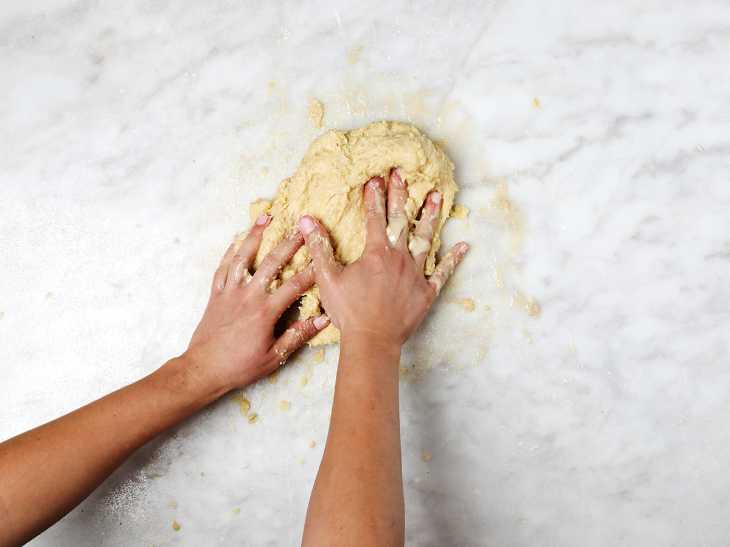
Push down your dough again and add the remaining sugar.
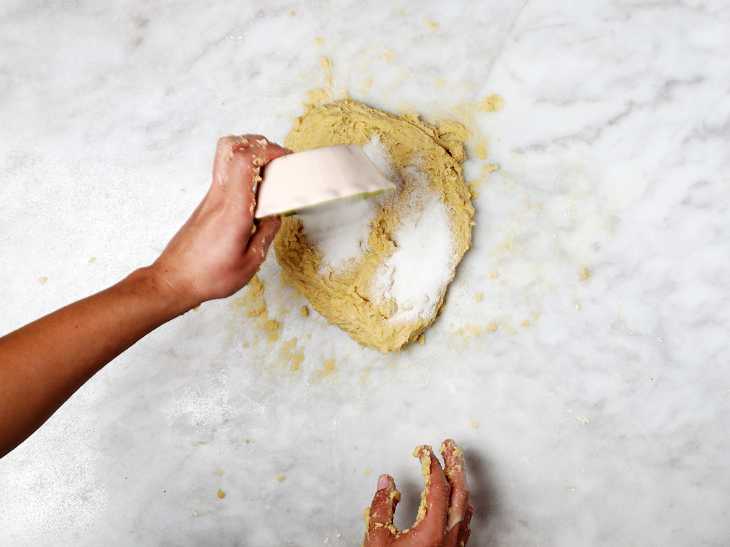
Mix firmly with your hands to fully incorporate the sugar.
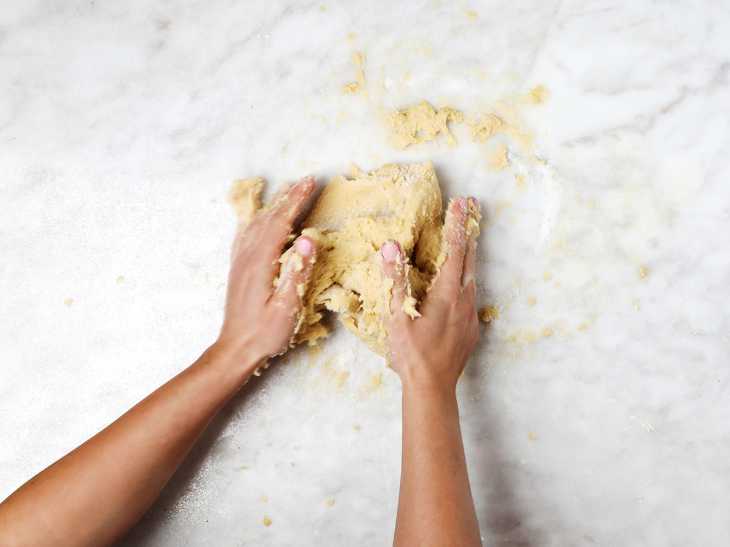
Add a splash of milk if the mixture is too dry.
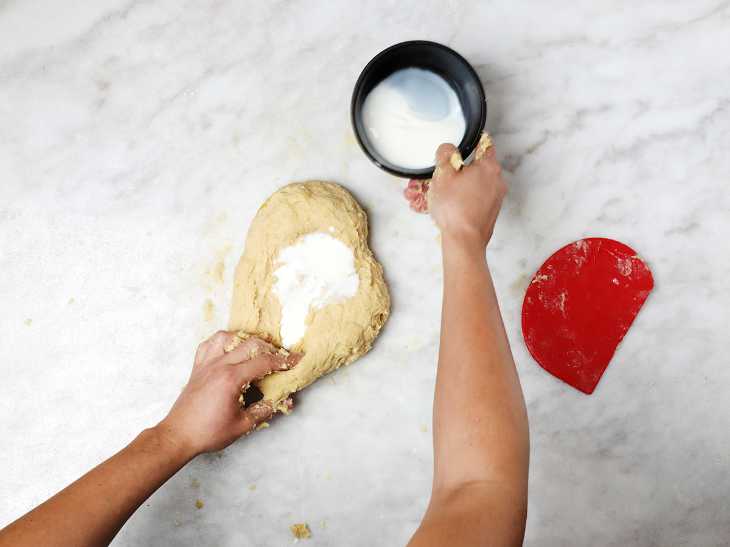
Step #3 – Kneading and Forming the Dough
Once you have fully mixed the dough by hand, add it to the bowl in your stand mixer with the bread hook attachment and knead for 5 minutes on medium-high speed. Let the dough rest for 10 minutes, then knead on medium-high speed for another 5 minutes. Add a bit of milk if the dough gets too dry.
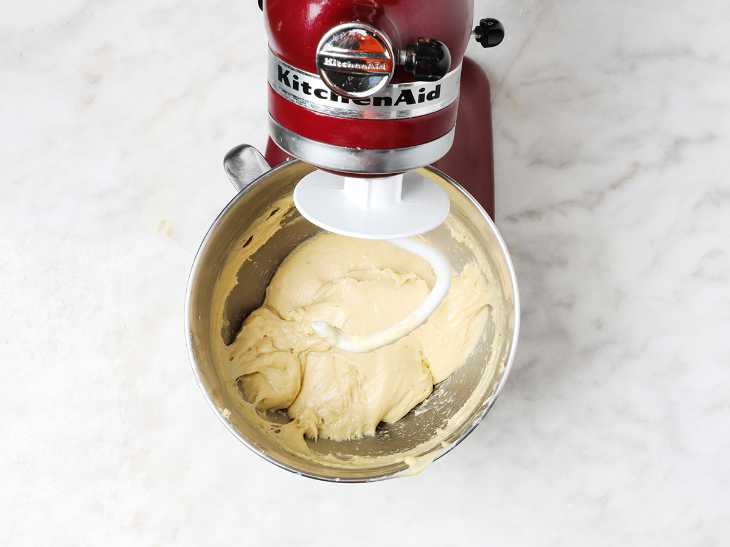
Place the kneaded dough on your work surface.
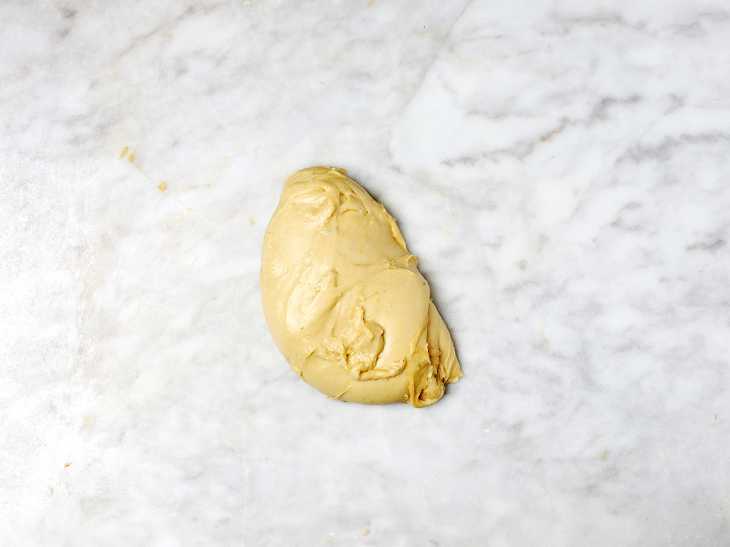
Using your hands, form the dough into a ball.
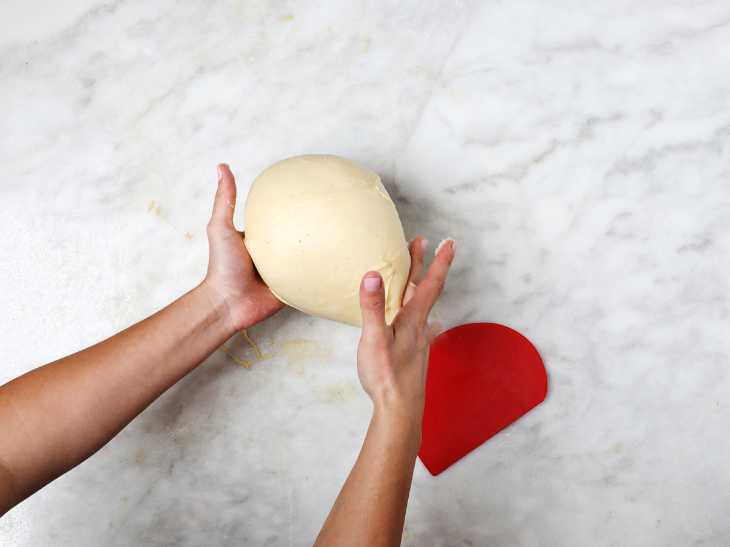
Keep working the dough until you’ve shaped it into a smooth sphere.
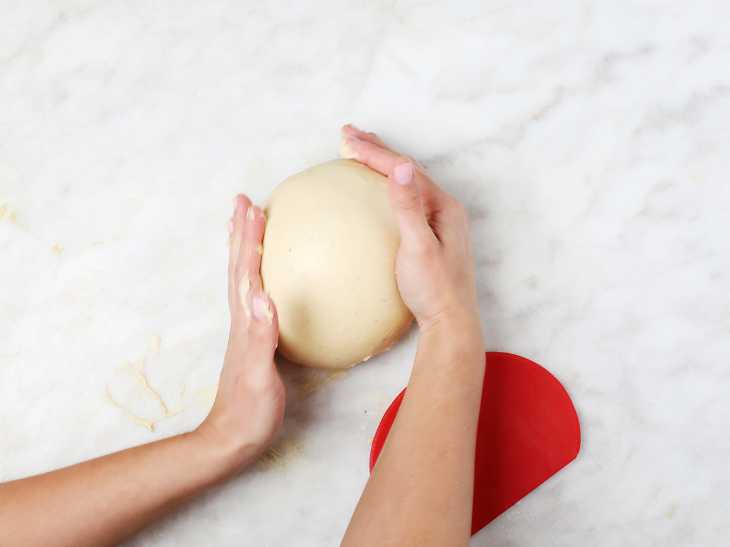
Perfectly shaped! Notice how the surface of the dough is smooth with a satiny sheen.
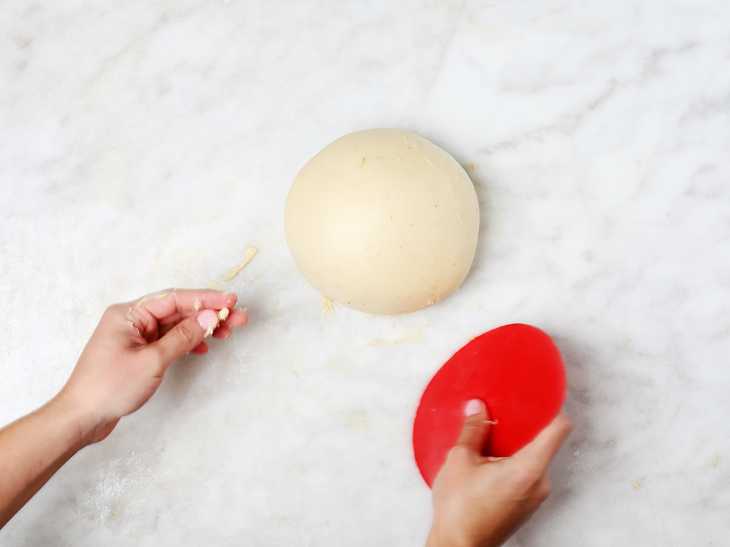
Step #4 – Proofing the Dough
Add 1 tablespoon of oil to a large mixing bowl.

Coat the bottom and sides of the bowl with the oil.
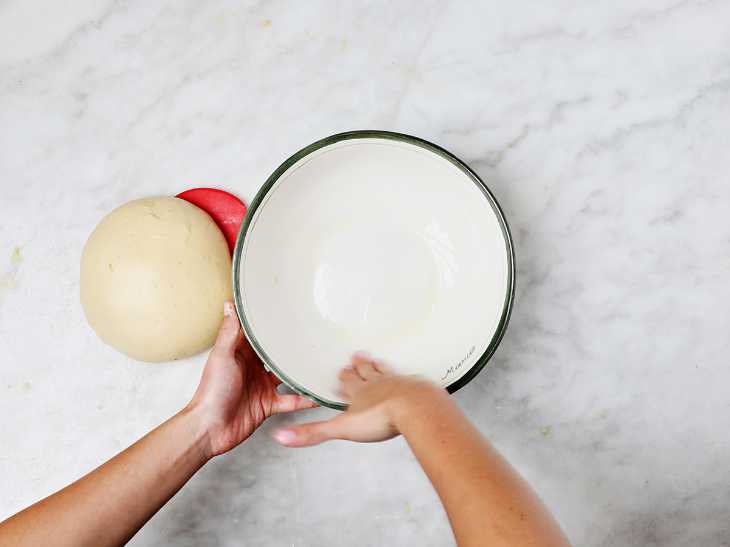
Add the ball of dough to your mixing bowl.
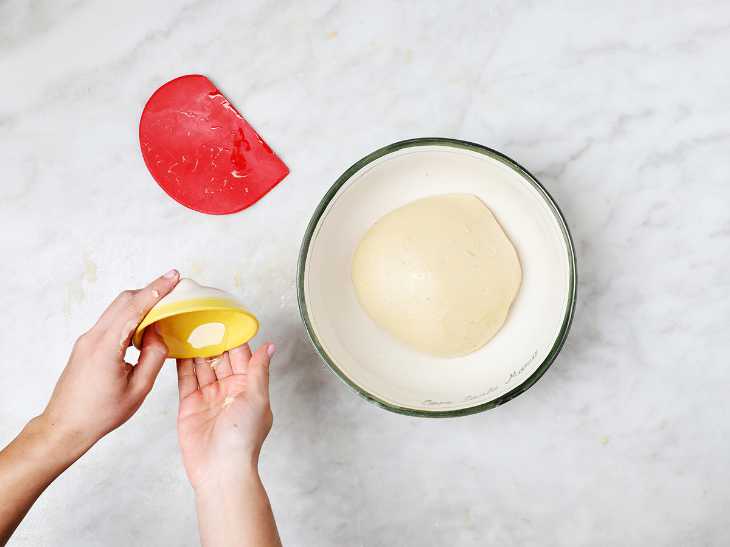
Press the dough down and coat with a bit more oil.
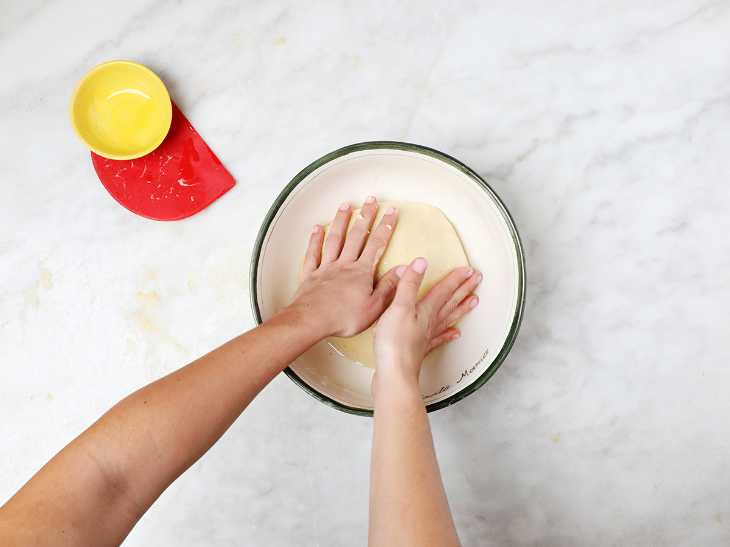
Cover with a kitchen towel and place in the warmest part of your kitchen until the dough has doubled in size.
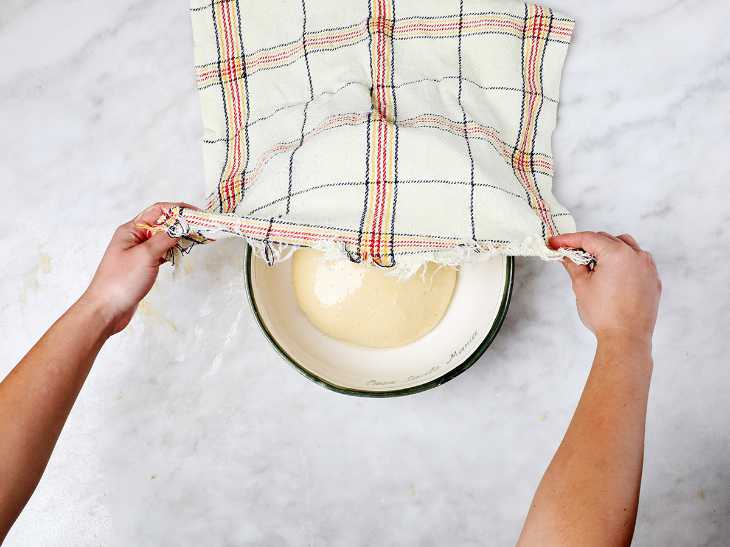
This is what the dough will look like after it has risen.
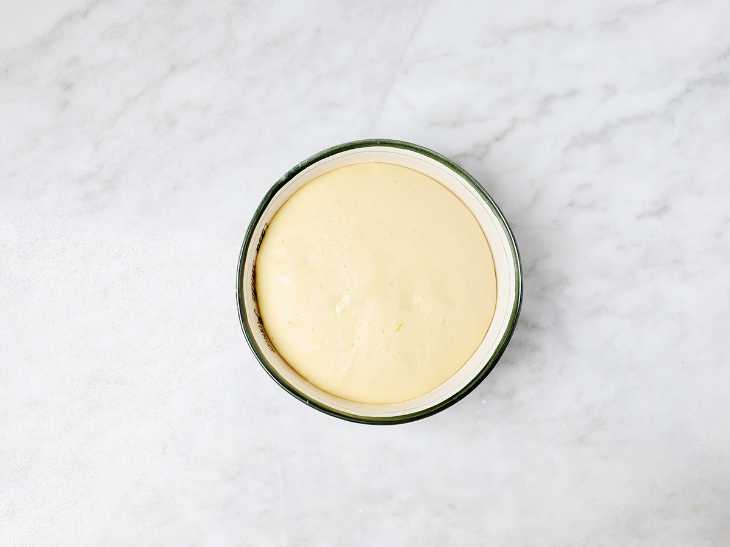
Step #5 – Shaping the Loaves
On your work table, gently press down the dough.
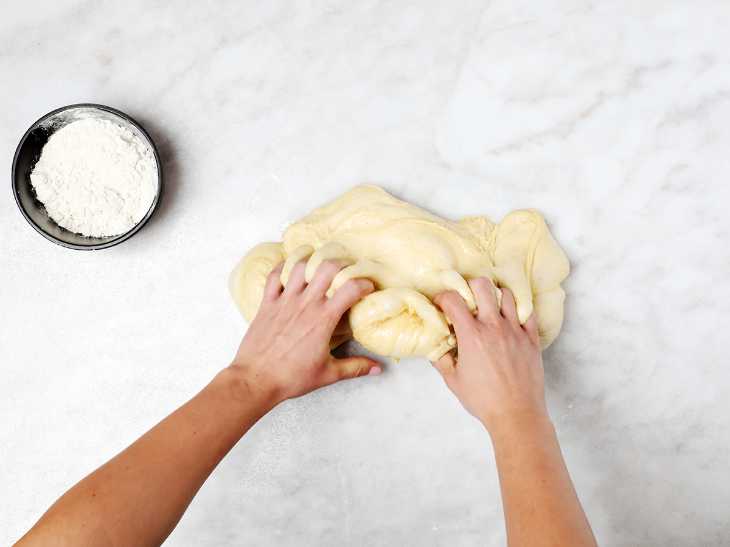
Stretch the dough into a thin piece about 15 inches long.
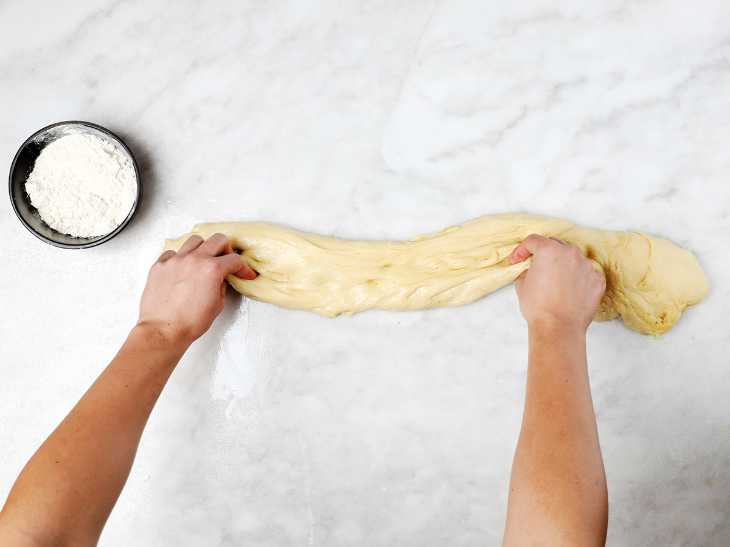
Form nine 3-ounce balls of dough. Use a kitchen scale to weigh each piece.
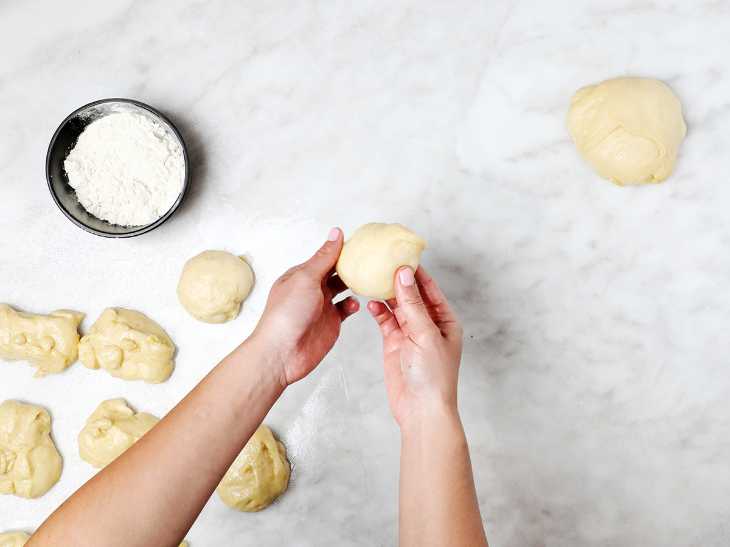
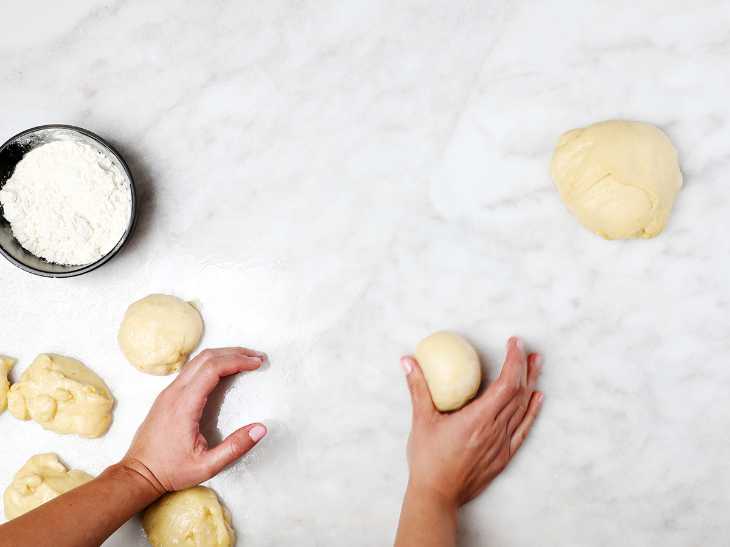
After you have formed nine balls, sprinkle the remaining dough with flour.
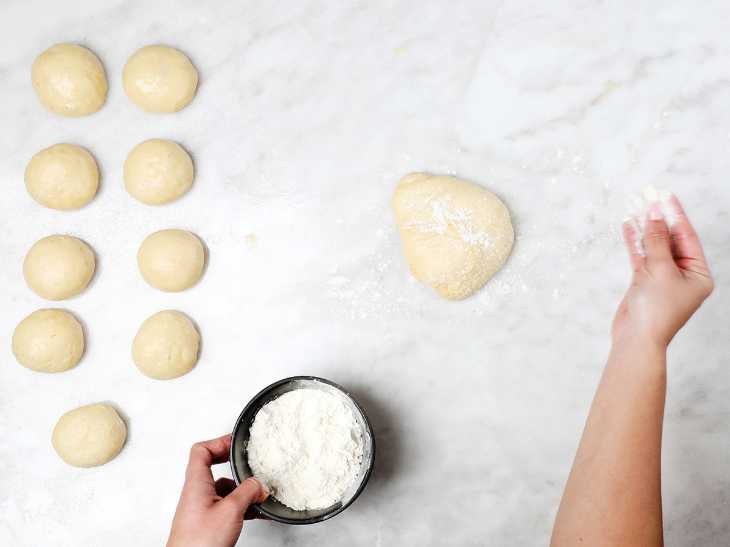
Knead the dough gently to incorporate the flour.
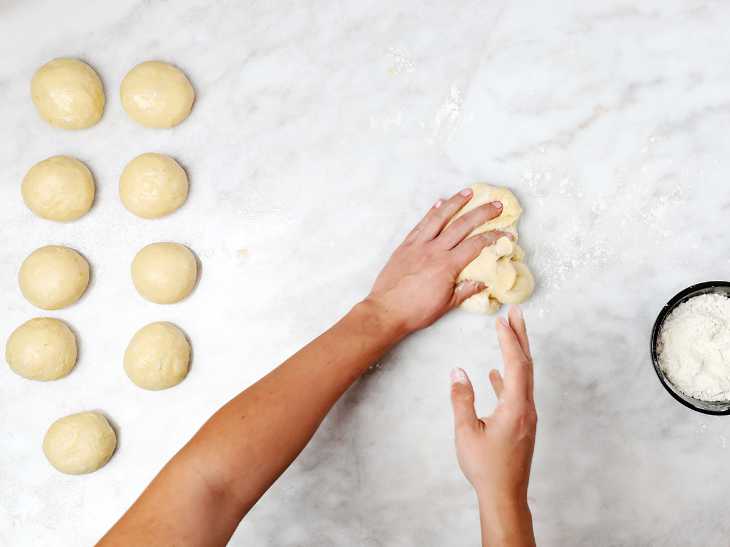
Using your pastry cutter, cut 18 small ½-ounce pieces of dough and seven, ¼-ounce pieces. These will be used to form the “bones” and “skulls.”
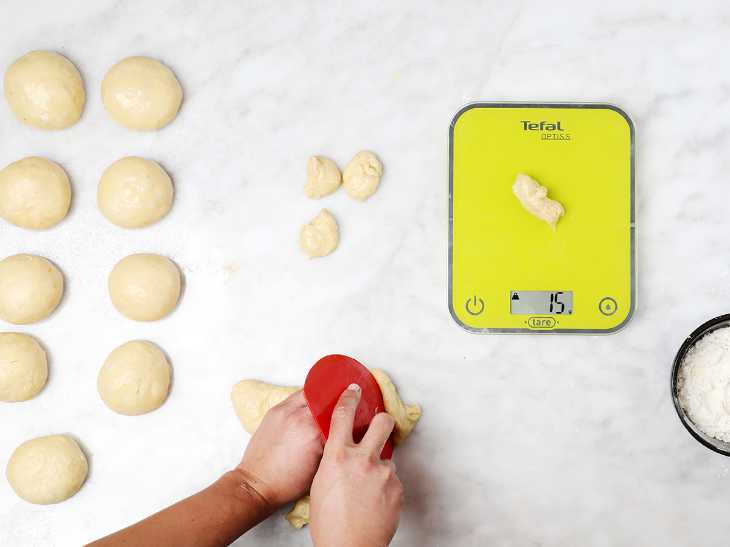
Roll the ½-ounce pieces into strips about 5 inches long. Leave the indentations from your fingers. This makes the dough look like bones. Then form the ¼-ounce pieces into little balls.
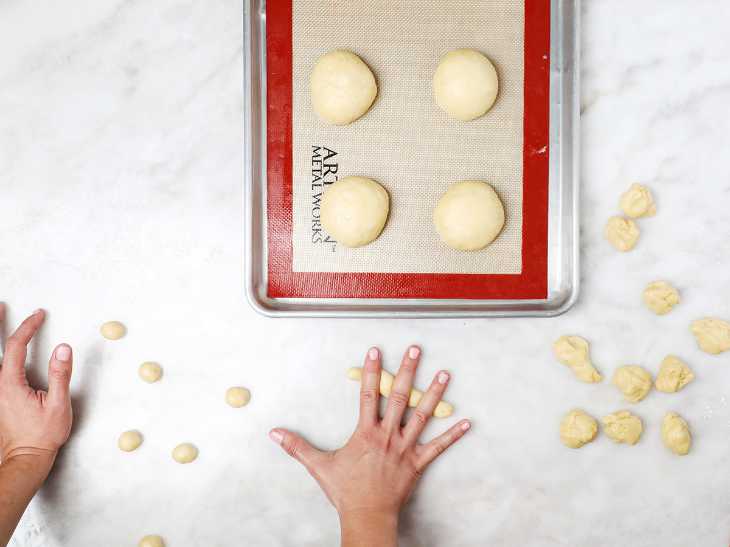
Top each loaf with two strips in a cross shape.
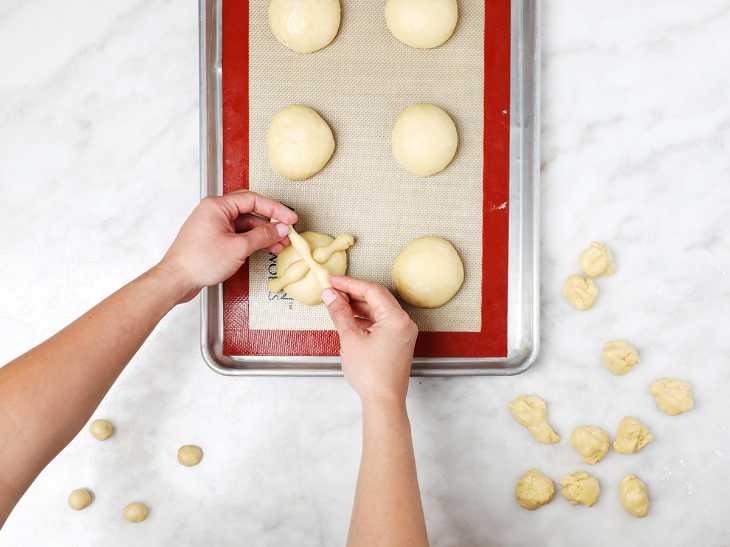
Then, in the center of each loaf, top with one of the small balls of dough.
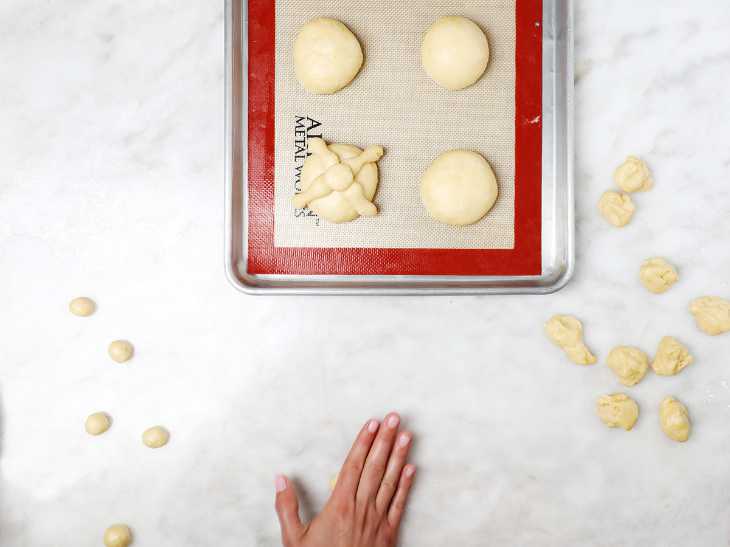
Your loaves are ready to bake. :)
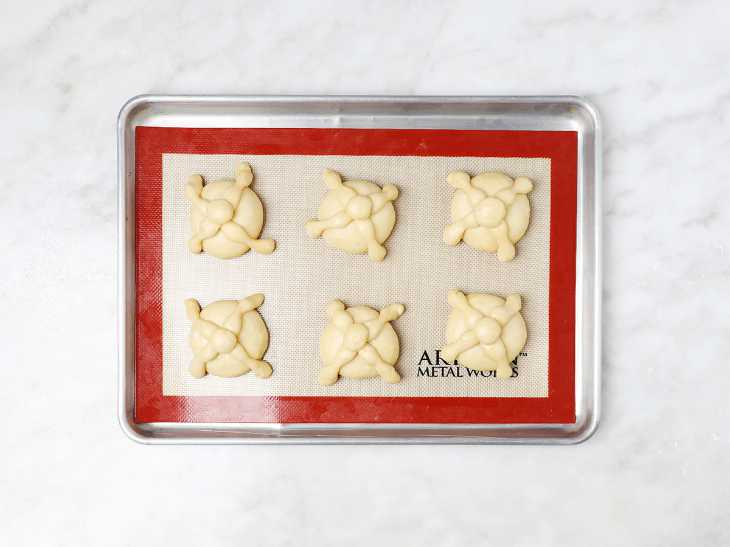
Step #6 – Baking the Loaves
Cover your baking sheet with a silicon mat or waxed paper.
Preheat your oven to 400 degrees. Lower the temperature to 350 degrees when you put the loaves in the oven. Bake for 15 to 20 minutes until the loaves are golden brown.
Perfectly baked loaves ready to be topped with sugar.
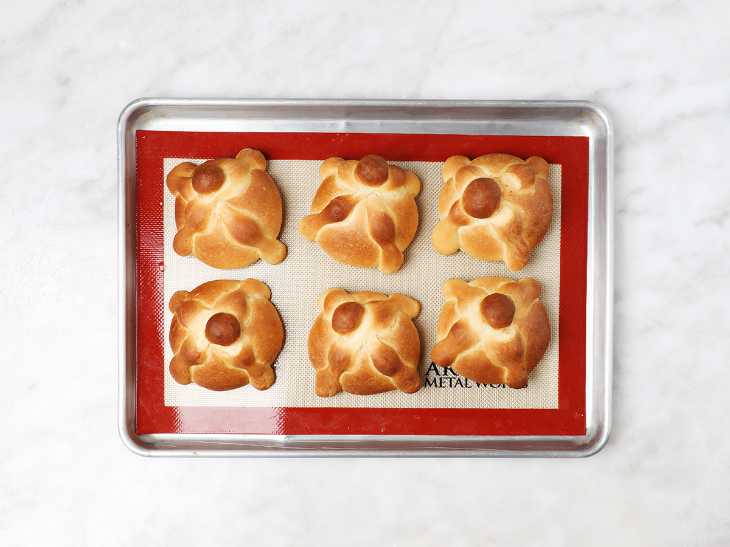
As soon as the loaves are cool to the touch, brush the melted butter on top of each one.
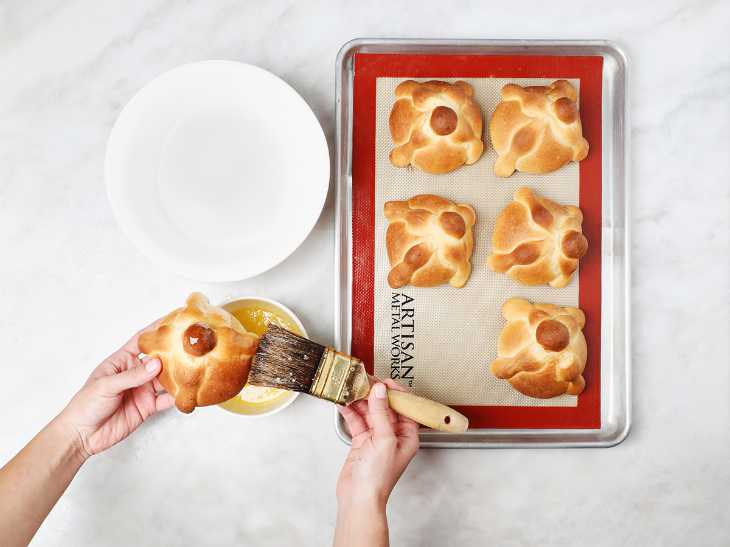
Sprinkle with sugar.
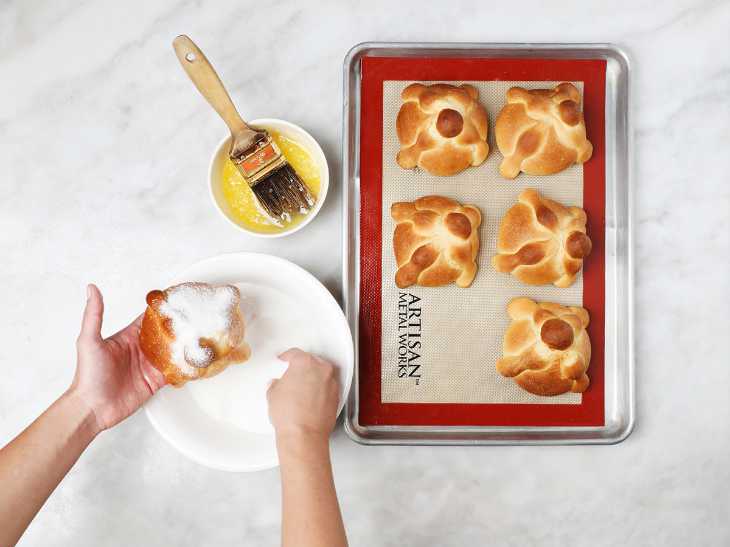
Your Day of the Dead Bread is ready to be enjoyed!

Provecho!
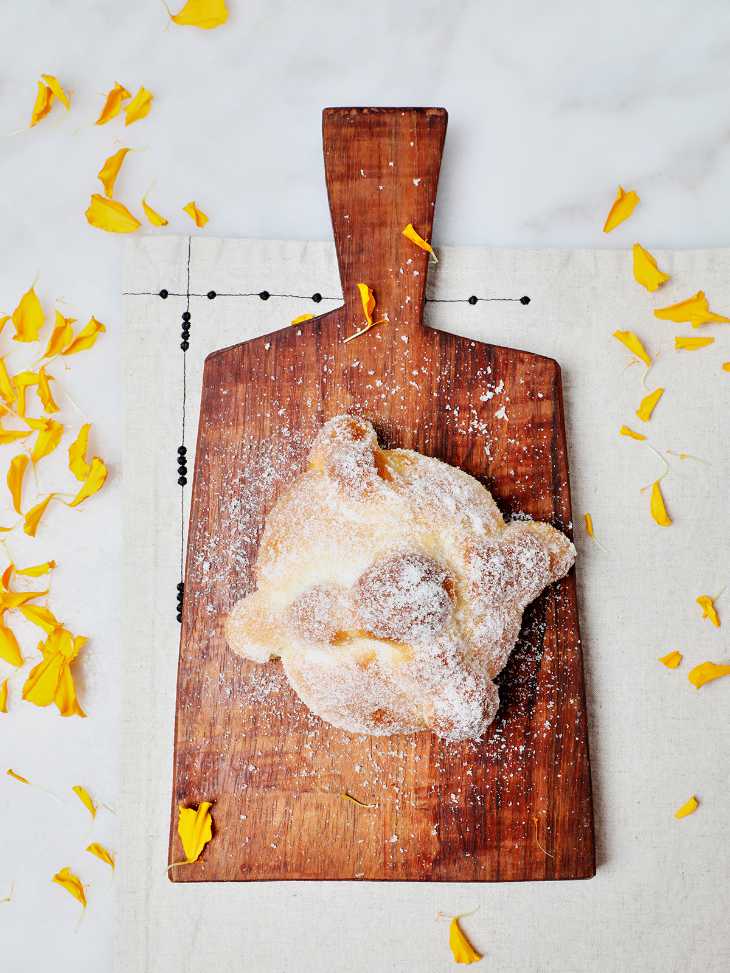
Pan de Muerto Recipe
Equipment
- Stand mixer
- Lg. Mixing Bowl
- Baking sheet
- Pastry cutter
- Lg. work surface or pastry table
Ingredients
- 18 ozs. flour
- 5 ½ ozs. sugar plus extra to sprinkle on top of loaves
- 3 ¼ ozs. butter to make dough
- 2 ozs. butter to coat the loaves
- 2 eggs
- 4 ozs. milk
- Grated peel from 2 oranges
- ⅓ oz. orange blossom water "agua de azahar"
- ½ oz. dry yeast
- 2 tbsp. oil to coat bottom of mixing bowl
- ½ tsp. salt
Instructions
Activating the Yeast
- Gently warm the milk. Don't let it get too hot or it will kill the yeast.
- In a small bowl, add 4 tbsp. flour, 2 tbsp. sugar, and the dry yeast. Add 1 to 2 ozs. of warm milk. This is just enough to make a thin, homogeneous paste.
- Stir until the milk is fully incorporated. Let the starter ferment for 10 to 15 minutes. The warmer the room temperature, the faster it ferments.
Mixing the Dough
- Grate the orange peel.
- On your work table, pour out the flour and make an indentation in the middle. In the indentation, add the butter, half the sugar, and the grated orange peel. Sprinkle the salt around the outside ring of flour.
- Firmly mix the eggs into the flour. Add the orange blossom water (agua de azahar). And a splash of milk if needed. Form a rough ball with the dough.
- Push the dough down and make an indentation in the center. Add the fermented yeast to the center of the dough. Use your hands to mix the yeast into the dough.
- Push down your dough again and add the remaining sugar. Mix firmly with your hands to fully incorporate the sugar. Add a splash of milk if the mixture is too dry.
Kneading the Dough
- Once you have fully mixed the dough by hand, add it to the bowl in your stand mixer with the bread hook attachment and knead for 5 minutes on medium-high speed. Let the dough rest for 10 minutes, then knead on medium-high speed for another 5 minutes. Add a bit of milk if the dough gets too dry.
- Place the kneaded dough on your work surface. Using your hands, form the dough into a ball. Keep working the dough until you get a perfect ball of dough.
Proofing the Dough
- Add 1 tbsp. of oil to a large mixing bowl. Coat the bottom and sides of the bowl with the oil. Add the ball of dough to your mixing bowl. Press the dough down and coat with a bit more oil. Cover the bowl with a kitchen towel.
- Place the bowl in the warmest part of your kitchen and allow the dough to rise until it doubles its original size.
Shaping the Loaves
- On your work table, gently press down the dough. Stretch the dough into a thin piece about 15" long.
- Form nine, 3-ounce balls of dough. Use a kitchen scale to weigh each piece.
- After you have nine balls, sprinkle the remaining dough with flour. Knead the dough gently to incorporate the flour.
- Using your pastry cutter, cut 18 small, ½-ounce pieces of dough and seven ¼-ounce pieces. These will be used to form the "bones" and "skulls."
- Roll the ½-ounce pieces into strips about 5" long. Leave the indentations from your fingers. This makes the dough look like bones. Then form the ¼-ounce pieces into little balls.
- Top each loaf with two strips in a cross shape. Then, in the center of each loaf, top with one of the small balls of dough.
Baking the Loaves
- Preheat your oven to 400 degrees. Lower the temperature to 350 degrees when you put the loaves in the oven. Bake for 15 to 20 minutes until the loaves are golden brown.
- As soon as the loaves are cool to the touch, brush the melted butter on top of each one, then sprinkle with sugar.
Nutrition



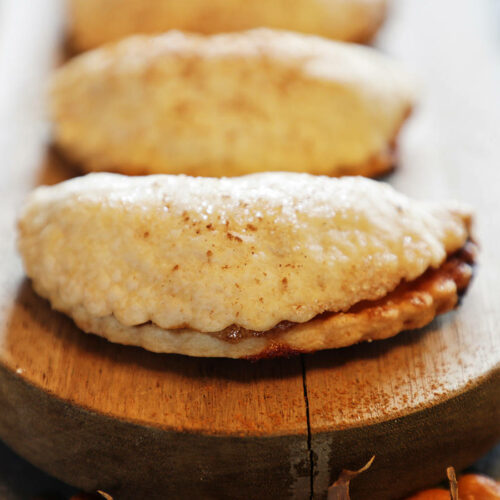
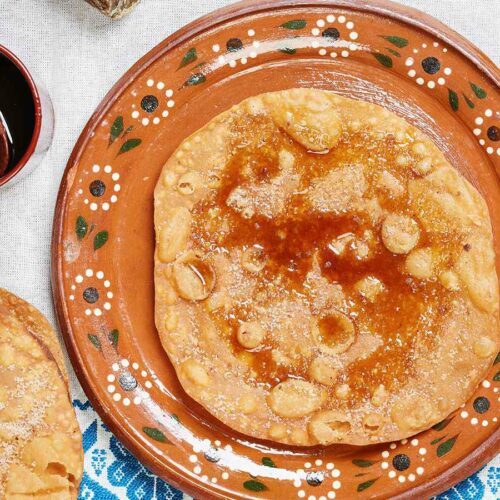
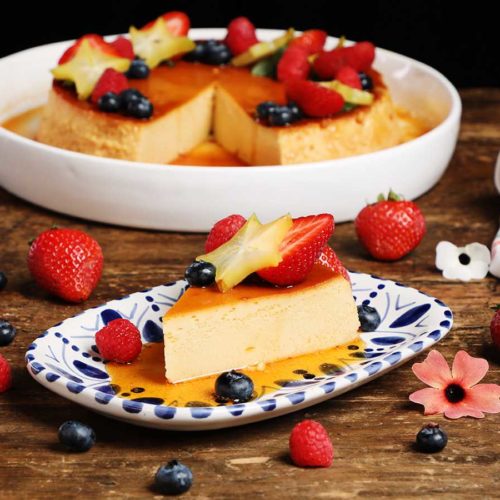
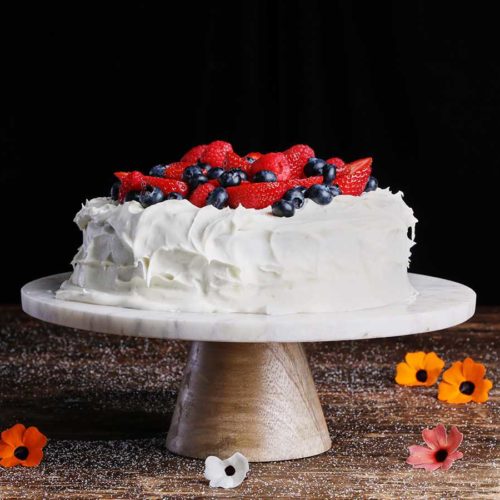
Brian Capouch says
Am I missing where it says how much orange peel?
Lori Alcalá says
Brian: It’s the grated peel from two oranges.
Sergio Torrez says
Where is the salt measurement?
Lori Alcalá says
1/2 tsp. salt. Just added that back into the recipe!
Maddie Guetzkow says
Wasn’t Very Easy and It wasn’t very bread-like.
Lisa says
The serving size shows 18, but according to recipe directions there should only be 8 servings. Am I missing something?
Johana Castillo Hernández says
El servicio qué ofrece es excelente, cada pasó con perfección te lo explica, y es un producto interesante.
Tanicka Whitaker says
I wouldn’t put wax paper in the oven. Use parchment instead or youll have a real mess.